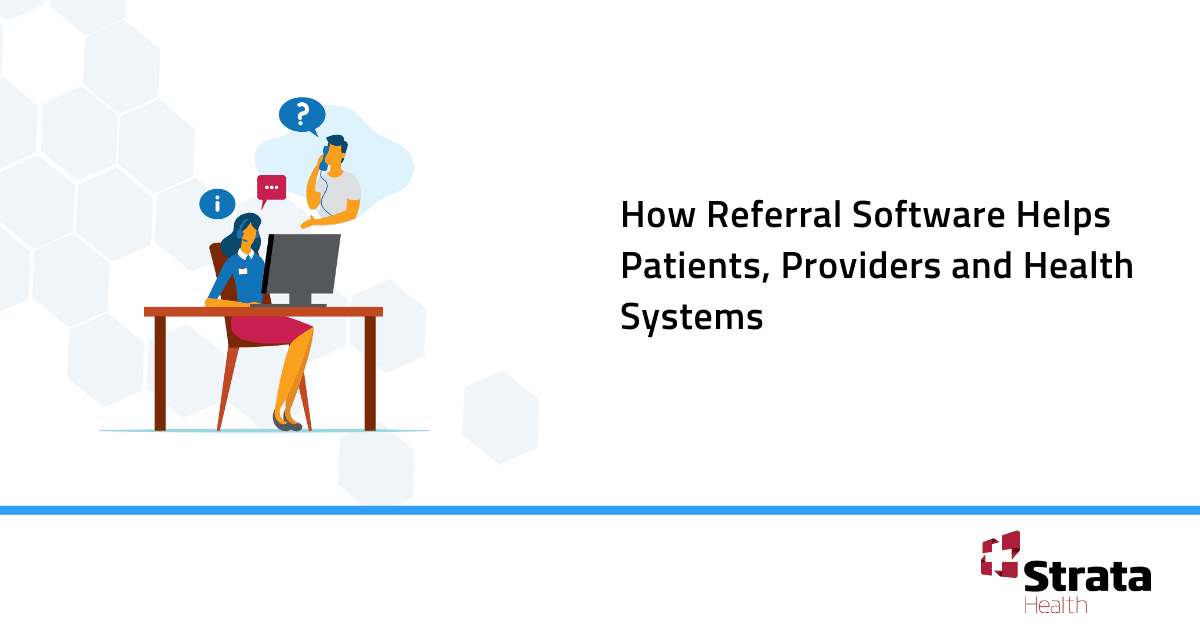
At Strata Health, we work closely with healthcare providers to develop solutions and strategies that improve the referral process, better engage patients, and improve outcomes.
The reality is that the referral process is often complex and typically requires collaboration across multiple care providers. A fragmented referral process is difficult for patients to navigate and frustrating for healthcare providers to manage. Using appropriate technology to improve the process can help address these challenges.
Empowering patients with timely and appropriate information on their referral options gives them agency in their transitions of care and improves their experience of the healthcare system as it crosses multiple providers. Embedding the information in a tool that informs and enables choice allows patients to make informed decisions and streamlines the process for providers.
When care providers rely on manual processes alone, referrals are left vulnerable to human error and communication breakdown. A referral that falls through the cracks results in delays, which can have a negative impact on patient outcomes. To achieve consistency, accuracy, and efficiency, clinicians tasked with patient navigation need an effective referral system that breaks down communication silos and avoids the risks inherent to manual processes.
Patient referral software, like Strata PathWays, offers Triple Aim (patient, provider, health system) improvements in the following ways:
- Helping Coordinate the Right Care for the Right Patient at the Right Time
- Clinicians can access a comprehensive database of referral resources and a recommendation algorithm, allowing them to better identify appropriate referral options for their patients’ needs.
- All stakeholders can easily track referrals, allowing insight into referral progress with a shared source of truth, updated in real-time.
- The system functions more smoothly, reducing inefficiencies and backlogs as patients transition between care settings, leading to a reduction in the time patients spend waiting to see care providers.
- Engaging Patients in Referral Process
- Clinicians can generate appropriate choices for patients, highlighting those that can provide optimal care and empowering the decision process.
- Patients can access their available choices and indicate preference based on relevant information.
- The health system can track that choice was provided to patients during the referral process for compliance audits.
- Reducing the Likelihood of Errors and Omissions
- The health system is able to minimize the risk in the hand-off of information and transition of patients between providers. This reduces the risk of medical errors, which in Canada, accounts for 28,000 deaths a year, and in the US, accounts for more than 250,000 death a year.
- Integration and automation reduce the administrative burden on clinicians by eliminating duplicate data entry.
- The shared source of truth provides a common understanding of a patient’s referral progress and allows for clearer, informed communication between providers and patients.
- Patients can feel more confident and comfortable in the referral process, reducing unnecessary stress and frustration that can take a heavy emotional toll on a patient and their family when referrals are lost or stall in the process.
Improving referral processes and systems is critical to better patient experience of transitions throughout the continuum of care. Adopting digital solutions like referral software can effectively and efficiently address referral and wider communication challenges. The result is a better experience for patients, providers, and an overall more efficient health system.
To learn more about Strata PathWays referral software and how you can improve transitions through the continuum of care for your patients, reach out to us today at support@stratahealth.com.
